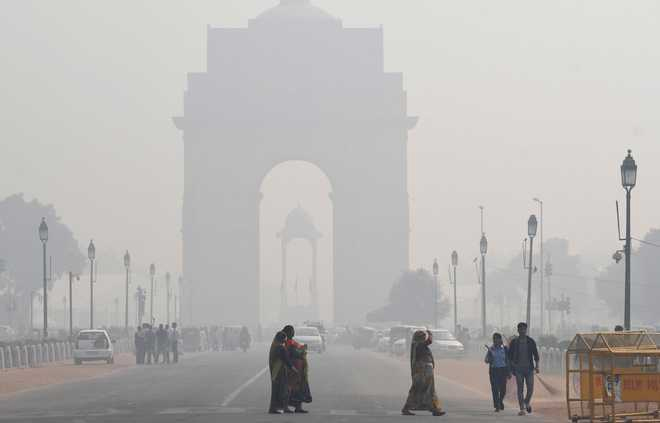news details |
|
|
| Lack of policy implementation keeping air pollution problem alive in Delhi: Experts | | |  agencies agencies
NEW DELHI, Mar 23: With Delhi being adjudged the most polluted capital in the world for the fourth consecutive year in 2021, experts feel that the lack of systematic implementation of plans and policies to fight air pollution in the entire airshed has been keeping the problem alive.
An airshed is the entire area over which the pollutants disperse due to meteorological and geographical factors.
Delhi is the world's most polluted capital for the fourth consecutive year in 2021, with pollution rising almost 15 per cent over the previous year, according to the World Air Quality Report released by IQAir, a Swiss firm.
Air pollution levels (96.4 micrograms per cubic metre) in the capital were around 20 times above the WHO-prescribed safe limit of 5 micrograms per cubic metre.
The reason why Delhi hasn't been able to improve its air quality all these years is due to the lack of a systematic and comprehensive policy implementation targeting absolute emission load reduction, Sunil Dahiya from the Centre for Research on Energy and Clean Air said.
London and Beijing were more polluted than Delhi at one time but they improved their air quality with the systematic and coordinated implementation of policies, he said.
"In Delhi, we have a plethora of policies and agencies, including the Commission for Air Quality Management and the National Clean Air Programme. Several pollution-related cases are in courts and the city government is also making efforts. But, little has been done keeping the larger airshed in mind. That's the reason the overall emission load, primarily due to fossil fuel burning, has not reduced," Dahiya said.
Despite transportation accounting for a large share in the overall emission load in Delhi, the government has shied away from capping the number of cars and setting a target to reduce the consumption of diesel and petrol.
Though the Delhi government has introduced Delhi Electric Vehicles policy which aims at increasing the EV share in total vehicle sales to 25 percent by 2024, vehicles plying in neighboring areas also affect its air quality, Dahiya said.
According to The Energy and Resources Institute, Delhi could reduce its PM 2.5 concentrations by nearly 35 percent by 2030 as compared to the 2019 emissions if efforts are made to manage pollution in the entire national capital region.
Karthik Ganesan, a research fellow at Council on Energy, Environment and Water, said all industries in the national capital region are yet to switch to PNG, barring Delhi and that doesn't solve the problem.
Also, public transport augmentation in Delhi has not happened speedily. The authorities are constructing peripheral expressways but that doesn't take the fossil fuel-driven vehicles far from the city, he said.
Ganesan said if air pollution has reduced in the capital over the years, as claimed by the authorities, they should tell what factors led to the decrease.
"And, we should not be talking about air pollution in winter alone. The air is equally bad in summers and nobody talks about the Decision Support System of the Indian Institute of Tropical Meteorology," he said.
Though the city government has taken several steps to reduce air pollution like directing fuel stations not to give fuel without a valid pollution-under-control certificate, there is no way to know whether the directions are being implemented on the ground.
Another problem with Delhi is the multiplicity of agencies which hamper the implementation of plans and policies to curb air pollution, Ganesan rued.
"The steps to reduce air pollution are all laid out in the city action plan. The authorities should now focus on their implementation," he added. |
|
|
|
|
|
|
|
|
|
|
|
|
| |
| |
|
|
|
|
 |
|
|
|
|
STOCK UPDATE |
|
|
 |
| BSE
Sensex |
 |
| NSE
Nifty |
|
|
| |
CRICKET UPDATE |
|
|
|
|
|
| |
| |
|
|
| |
|
|
|
|
| |
|
|
|
|
|
|
|
|
|
|
|
|
|
